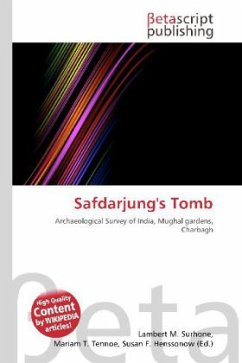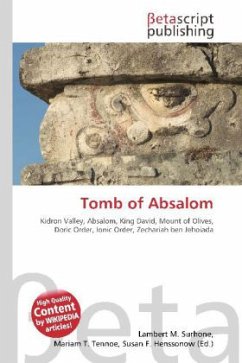Please note that the content of this book primarily consists of articles available from Wikipedia or other free sources online. Safdarjung''s Tomb is a garden tomb in a marble mausoleum in Delhi, India. It was built in 1754 in the style of late Mughal architecture. The top story of the edifice houses the Archaeological Survey of India. The garden, in the style evolved by the Mughal Empire that is now known as the Mughal gardens style known as a charbagh, is entered through an ornate gate. Its facade is decorated with elaborate plaster carvings. The tomb was built for Safdarjung, the powerful prime minister of Muhammad Shah who was the weak Mughal emperor from 1719 to 1748. The central tomb has a huge dome. There are four water canals leading to four buildings. One has an ornately decorated gateway while the other three are pavilions, with living quarters built into the walls. Octagonal towers are in the corners. The canals are four oblong tanks, one on each side of the tomb.
Bitte wählen Sie Ihr Anliegen aus.
Rechnungen
Retourenschein anfordern
Bestellstatus
Storno








